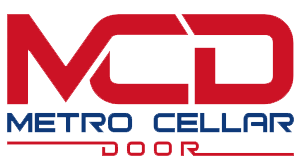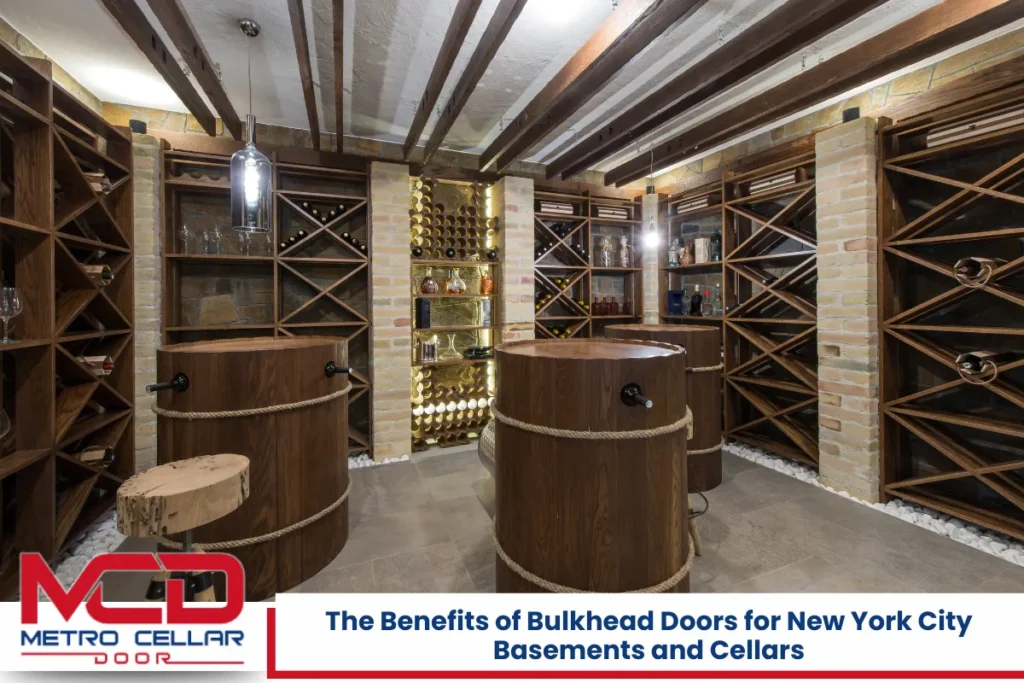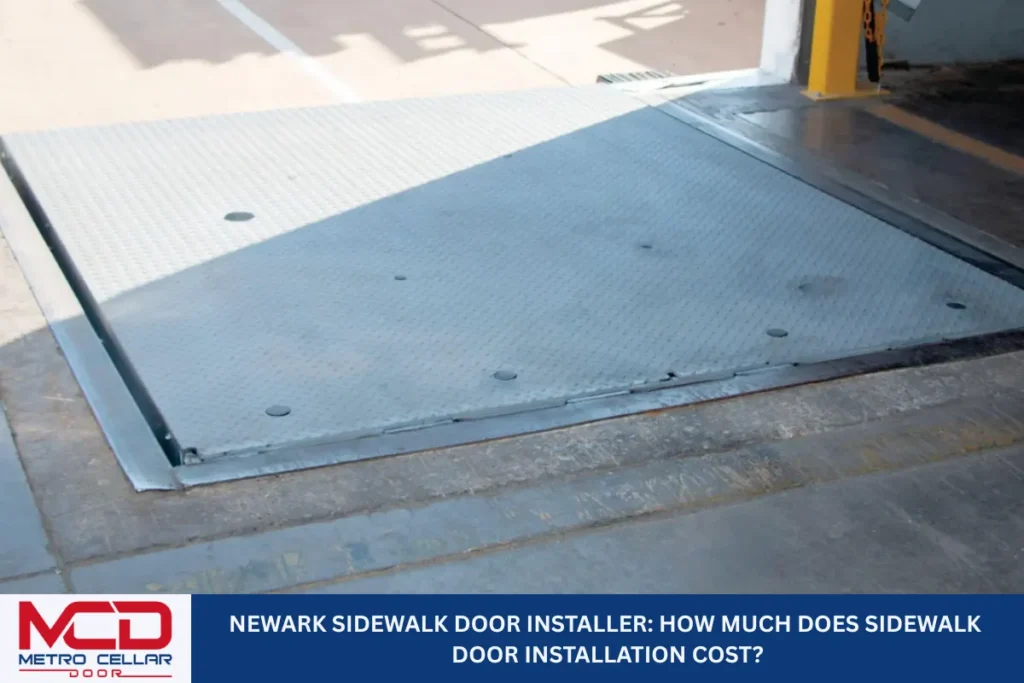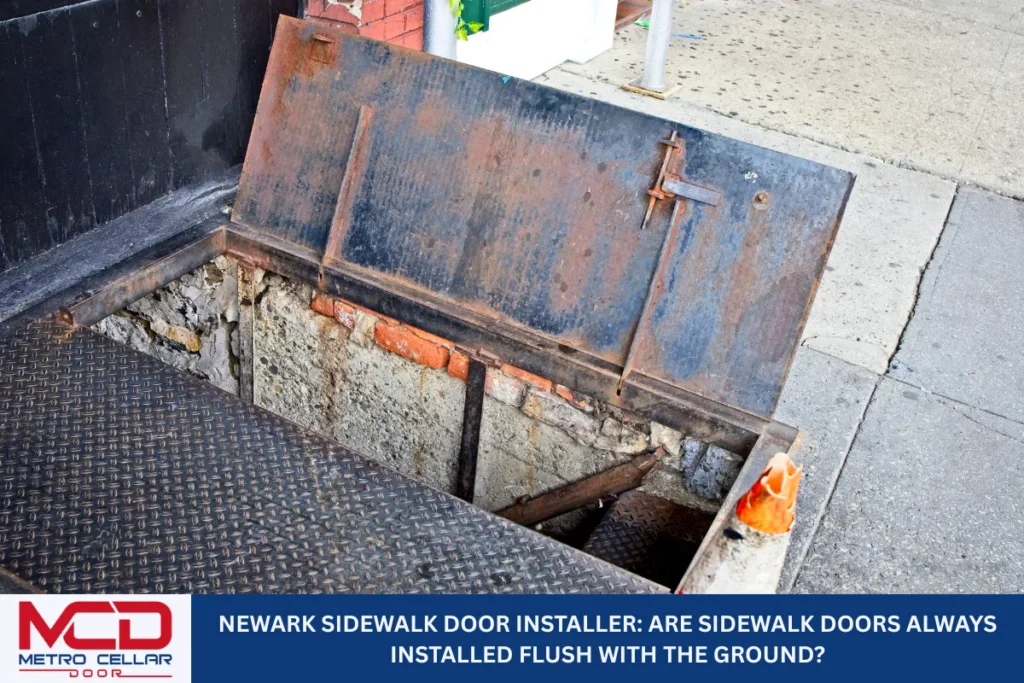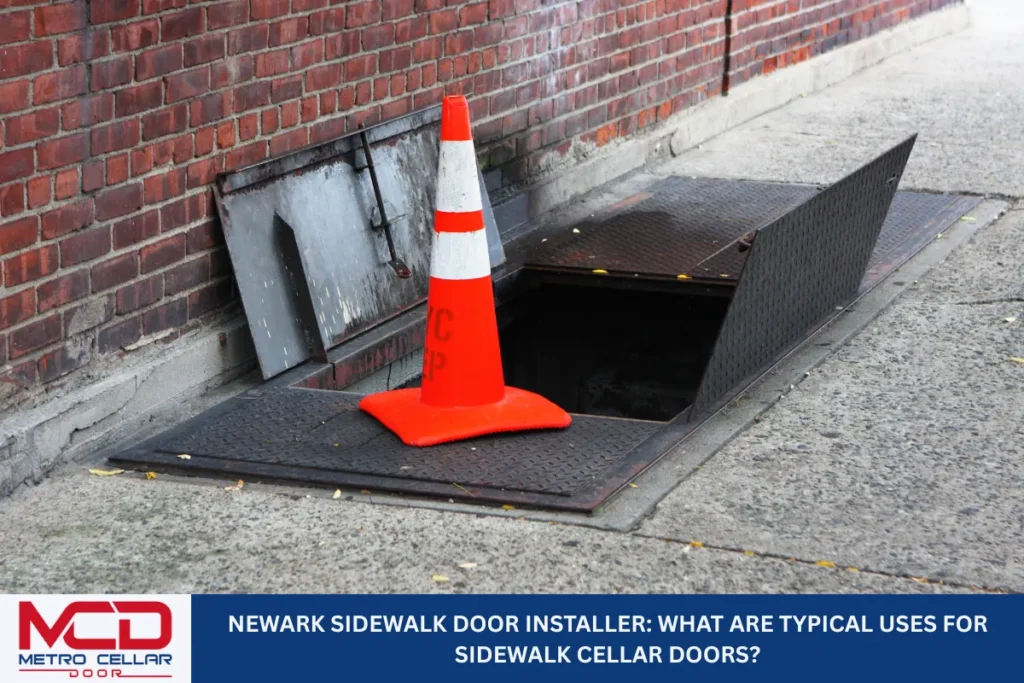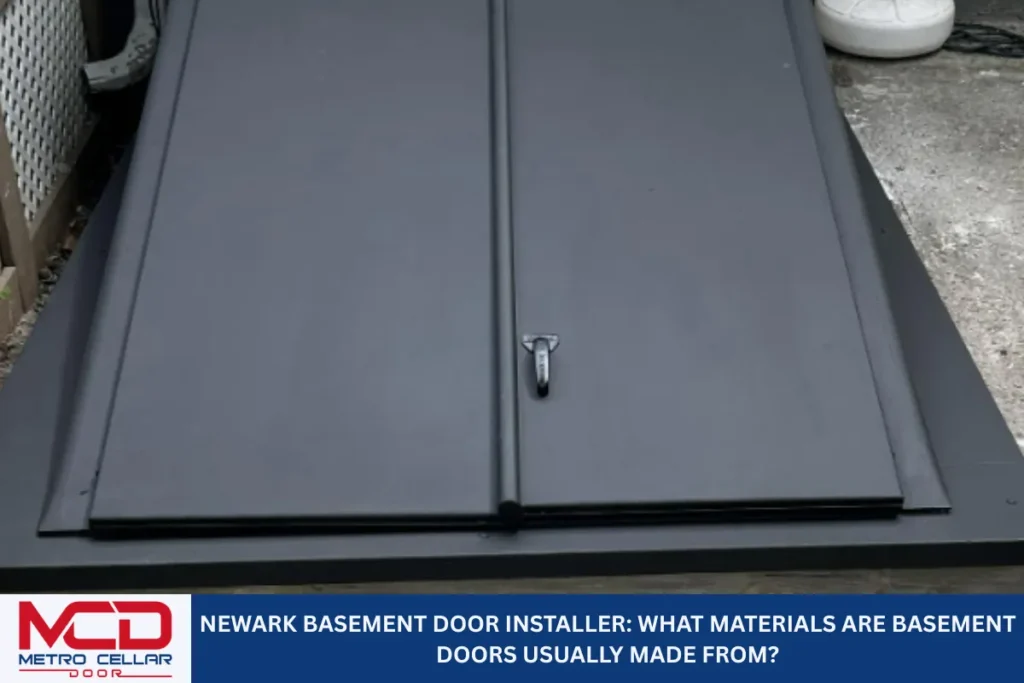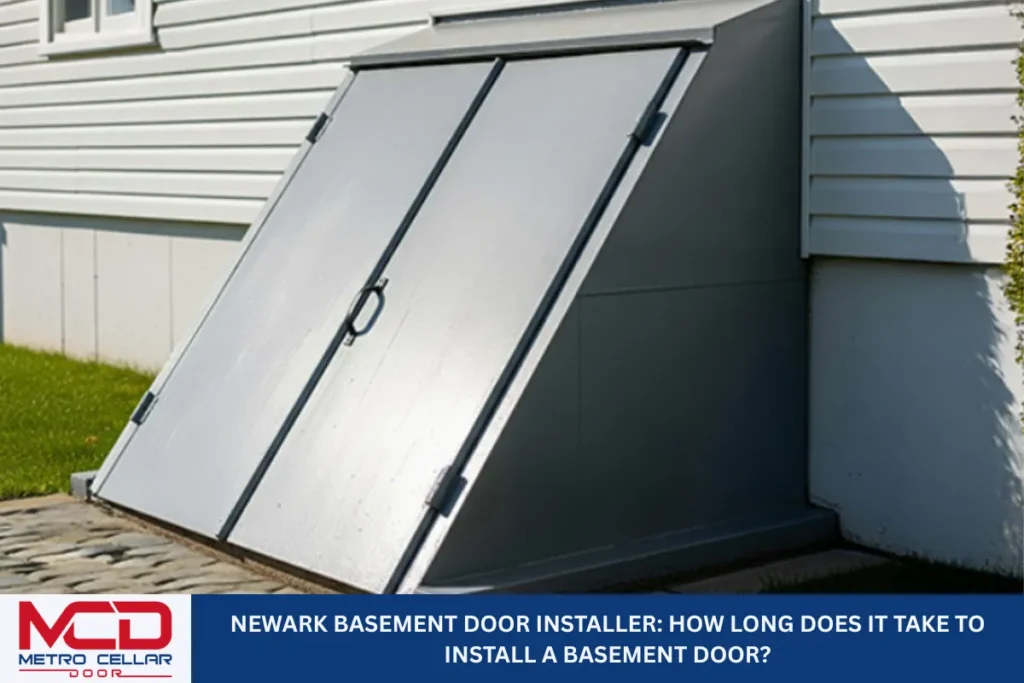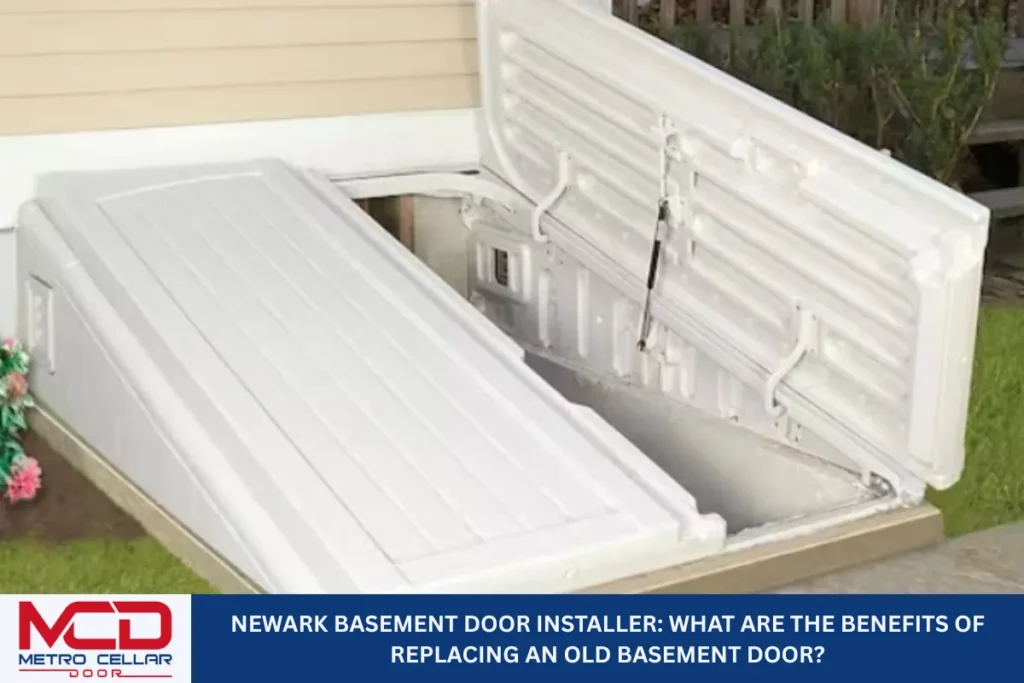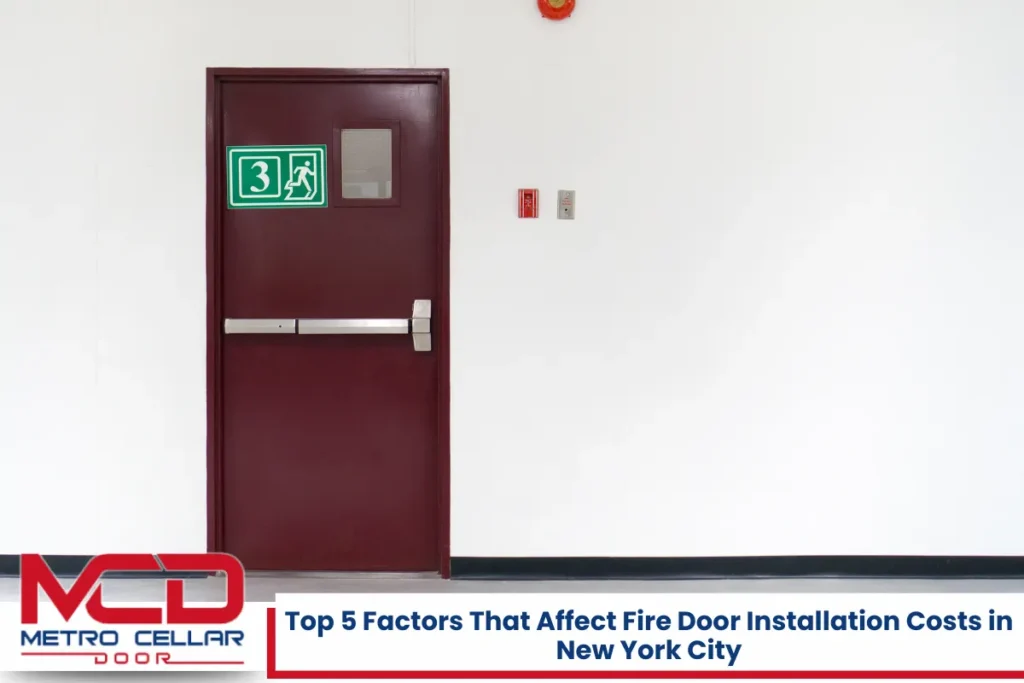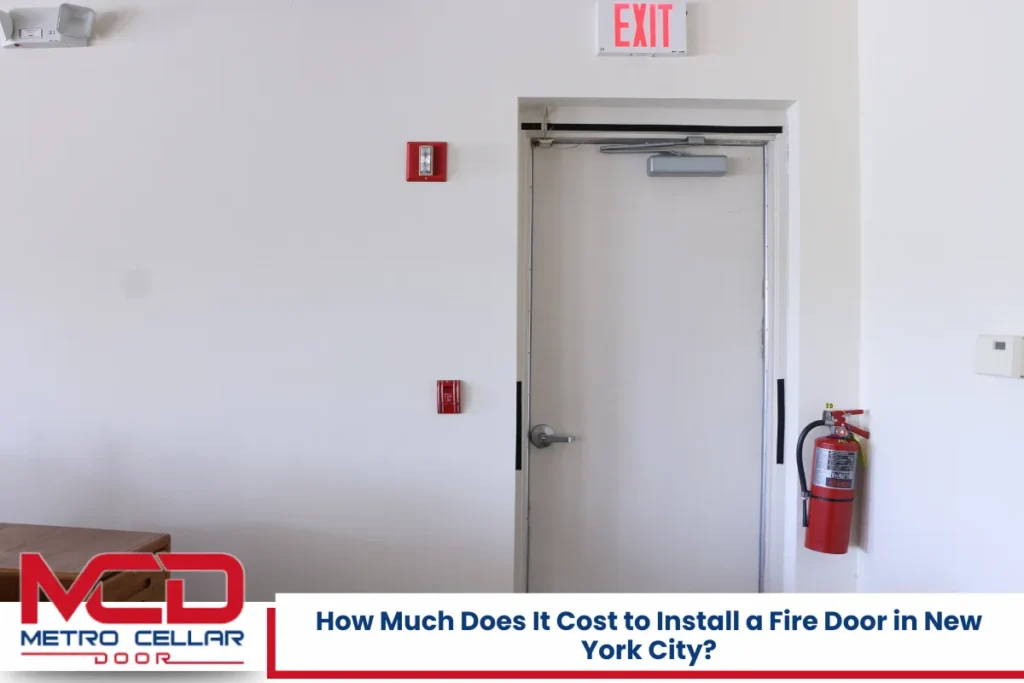Every property in New York City, whether residential or commercial, can benefit from smart, practical upgrades that enhance safety, functionality, and overall structure. A bulkhead door installer can help make this possible by introducing one of the most efficient and space-saving access solutions for basements and cellars. These doors aren’t just about looks or access—they serve essential purposes in flood prevention, emergency egress, and property value.
Bulkhead doors, also known as basement doors or cellar doors, are particularly useful in the dense and diverse environment of NYC, where maximizing space and ensuring building code compliance are crucial. Whether a building is located in Brooklyn’s historic districts or in the residential zones of Queens, the proper installation of a bulkhead door supports long-term structural durability. It enhances the safety of the space below.
Why Bulkhead Doors Matter for NYC Homes and Buildings
In a city where most homes and buildings make use of below-ground spaces, the importance of bulkhead doors can’t be understated. These doors provide direct, outdoor access to basements or cellars, helping to separate indoor living spaces from storage or mechanical areas.
Enhancing Functionality and Safety
A bulkhead door serves as a secondary exit route, which is especially important in emergencies. New York City building codes often require two points of egress for habitable basement spaces. Bulkhead doors meet this requirement while allowing convenient, above-ground access to underground areas.
Suitability for New York Architecture
Many older buildings in Manhattan, The Bronx, and Staten Island were not originally designed with bulkhead access. However, with updates in zoning laws and safety protocols, more property owners are now choosing to upgrade. Modern bulkhead doors can be adapted to both historical and new-build properties, blending functionality with architectural compatibility.
Key Benefits of Installing a Bulkhead Door in Your NYC Basement

Adding a bulkhead door is a practical solution that provides both functional and long-term structural benefits for buildings throughout the city.
Flood Protection and Water Control
Flooding is a common concern throughout NYC, particularly in areas such as Queens and parts of Long Island. A properly installed bulkhead door provides a weather-sealed entrance, keeping rainwater and storm runoff out of the basement. When paired with adequate drainage and sloping, this door can prevent thousands of dollars in water damage.
Improved Ventilation and Airflow
Basements can trap moisture and become breeding grounds for mold if not properly ventilated. Bulkhead doors support airflow when opened, helping to regulate temperature and reduce humidity buildup in enclosed spaces.
Ease of Access
Moving large items, such as appliances, tools, or renovation supplies, through interior staircases can be difficult or impossible. Bulkhead doors make it easy to transport goods directly into the basement without damaging walls or flooring inside the home.
Structural Separation
In mixed-use buildings or multi-family homes, separating entrances is often necessary for privacy or to maintain separate functions. A bulkhead door can serve as a distinct, external entrance to a storage or utility space, allowing for tenant access while maintaining a separate entrance.
Common Challenges in NYC Basements That Bulkhead Doors Solve
New York City properties often have aged foundations, poor ventilation, and drainage issues due to decades-old infrastructure. Installing a bulkhead door addresses several of these challenges head-on.
Moisture and Dampness
Basement walls in NYC buildings, especially those built before 1950, often suffer from rising damp or seepage after heavy rains. A sealed bulkhead door reduces the chances of surface water entering the structure, preventing further moisture buildup.
Limited Entry Points
Single-entry basements are both unsafe and impractical. In the event of a fire or blocked staircase, a secondary exit through a bulkhead door can be life-saving.
Code Violations
With updated local codes emphasizing egress compliance and ventilation, many property owners find that adding a bulkhead door helps them meet legal standards without needing a full basement renovation.
How a Professional Bulkhead Door Installer Makes All the Difference
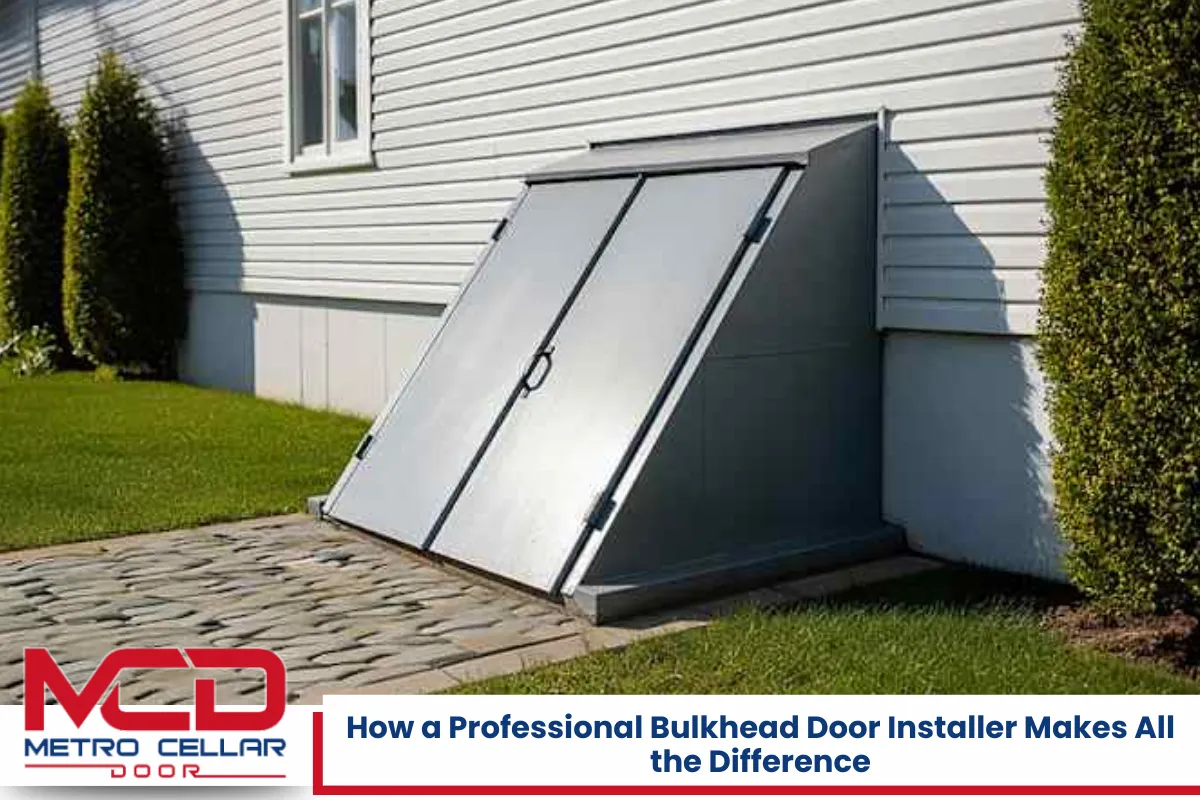
DIY installations can often lead to improper sealing, incorrect sizing, and eventual structural damage. The expertise of a professional bulkhead door installer is essential, especially in a city as structurally complex as New York.
Accurate Measurements and Custom Fitting
Every NYC property has its own structural footprint. A skilled installer will take exact measurements, evaluate wall angles, and determine the best door type and size for the available space. Custom fitting ensures airtight sealing and proper drainage alignment.
Knowledge of City Regulations
NYC’s Department of Buildings has clear requirements for egress windows and doors in basements. A professional installer is familiar with these codes and can help secure any necessary permits, ensuring compliance and avoiding fines.
Long-Term Durability
Professionally installed bulkhead doors are better sealed, more secure, and longer lasting. From rust-proof materials to solid concrete mounting, a trained installer focuses on materials and methods that withstand New York’s climate and soil movement.
Bulkhead Door Materials: What’s Best for NYC Weather and Conditions?
New York City’s environment encompasses a diverse range of conditions, from winter snowstorms to salty coastal air and humid summers. Choosing the right material for your bulkhead door is crucial for durability and performance.
Steel Bulkhead Doors
Steel is one of the most durable materials and is widely used in both residential and commercial properties. It offers excellent protection against forced entry and adverse weather conditions. However, steel must be coated or galvanized to resist corrosion, especially in areas near water or with heavy rainfall.
Aluminum Bulkhead Doors
Aluminum doors are lightweight, corrosion-resistant, and ideal for properties in coastal areas such as parts of Queens or Staten Island. They don’t rust and are easier to handle during installation. While slightly more expensive than steel, they offer excellent longevity with minimal maintenance.
Composite or Polyethylene Bulkhead Doors
These modern alternatives are made of high-grade plastic materials that are resistant to rot, corrosion, and UV damage. They are often molded for a tight seal and offer a sleek appearance. Though less common in traditional NYC buildings, they are gaining popularity due to their low upkeep needs.
Do You Need a Permit to Install a Bulkhead Door in NYC?
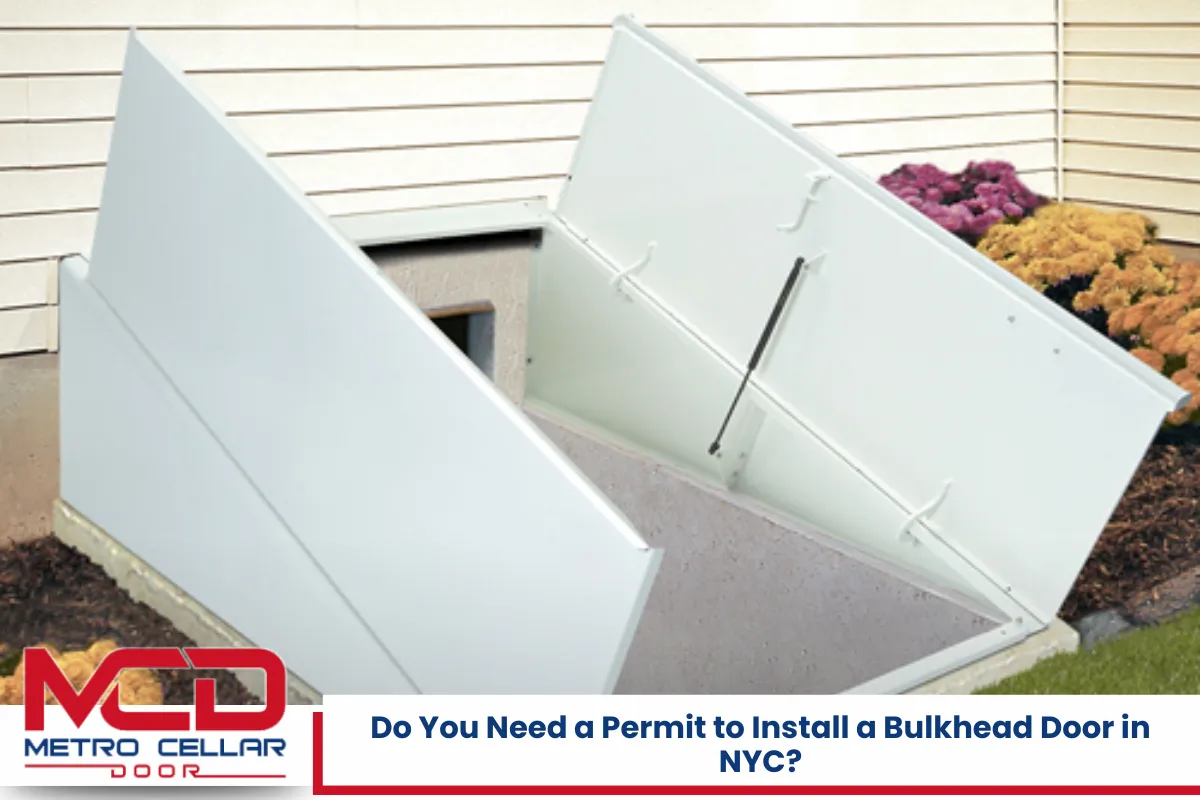
Building codes in New York City are among the strictest in the country. In most cases, yes, a permit is required for installing a new bulkhead door, especially if it involves modifying the foundation or changing the building’s structure.
Types of Work Requiring Permits
- Installation of a new bulkhead door where one did not previously exist
- Replacement of old doors that involve structural alteration
- Any work that changes the grading or drainage pattern around the property
Permits are generally issued through the NYC Department of Buildings (DOB). They may require architectural plans, depending on the complexity of the installation.
Working with a Licensed Installer
A certified bulkhead door installer can guide you through the permitting process or handle it on your behalf entirely. This ensures the job is completed quickly, safely, and without any legal complications down the line.
Maintenance Tips to Extend the Life of Your Bulkhead Door
Even the best door won’t last without regular upkeep. Simple maintenance practices can keep your bulkhead door functioning properly for years to come.
Regular Inspections
Check the door hinges, seals, and panels at least twice a year—ideally in spring and fall. Look for signs of rust, warping, or wear on the sealant.
Drainage Checks
Keep the area around the bulkhead clear of leaves, soil buildup, or debris. Blocked drains can lead to water pooling and eventual seepage into the basement.
Lubrication and Painting
Lubricate hinges to prevent stiffness during cold months. For metal doors, repaint every few years to preserve their finish and protect against rust and corrosion.
Signs It’s Time to Replace or Upgrade Your Bulkhead Door
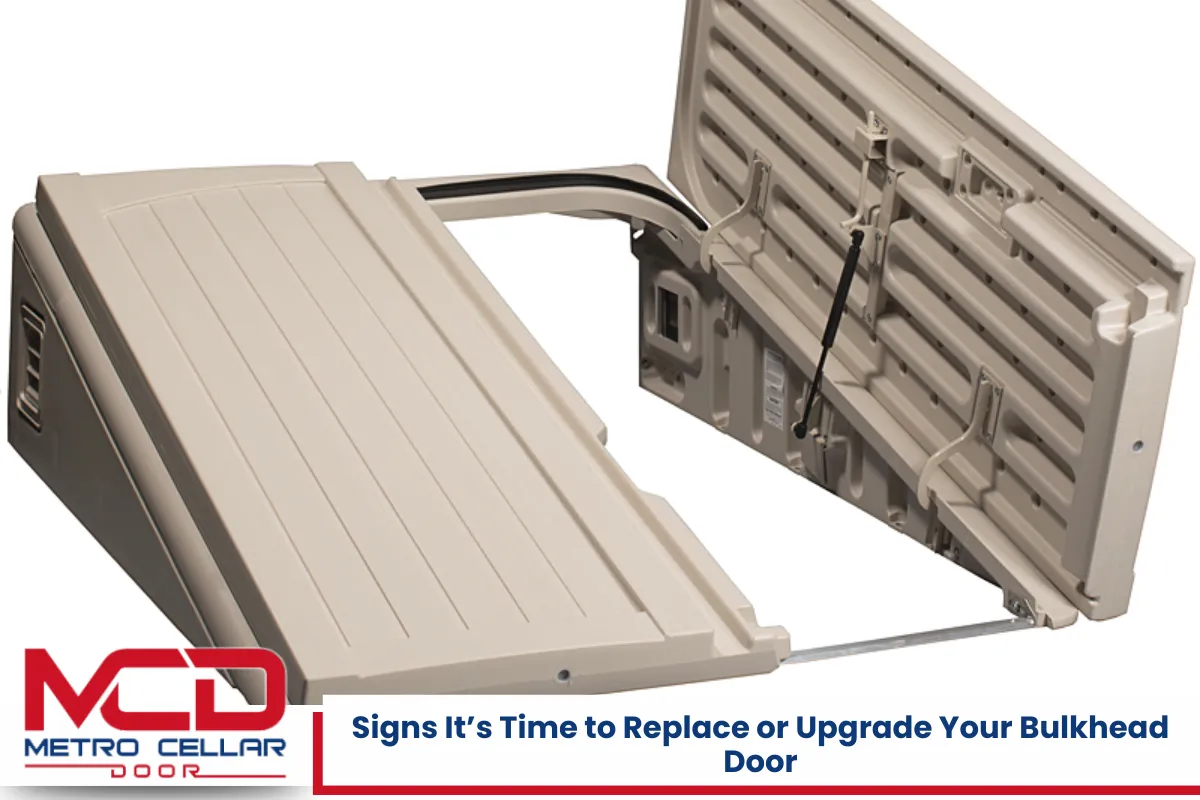
Aging or poorly installed bulkhead doors can lead to several issues. Knowing when to replace your door helps prevent structural damage and security risks.
Visible Corrosion or Rust
Surface rust may seem minor, but it can lead to serious weakness over time. If corrosion is spreading or the door feels soft or brittle, it may be time for a full replacement.
Water Leakage
If you notice water marks near the base of the door or pooling water inside the basement, the sealing system may have failed. Upgrading to a watertight model can help protect your property.
Misalignment
Doors that stick, sag, or don’t shut properly are more than an inconvenience—they can let in drafts, pests, or moisture. These signs typically indicate a need for repair or complete replacement.
Final Thoughts on the Value of Bulkhead Doors for NYC Properties
Investing in a bulkhead door is a practical decision that goes beyond aesthetics or convenience. For property owners in New York City, it’s a smart solution that improves safety, reduces water damage risks, and enhances property value. By providing safer and easier access to basements and cellars, bulkhead doors enhance the functionality and compliance of buildings with modern building standards.
While there are several door types and installation methods available, the key to long-lasting results lies in working with the right professionals. From selecting the ideal material to ensuring perfect alignment and waterproofing, proper installation ensures that your investment pays off over time.
NYC Bulkhead Door Installer – Metro Cellar Door Bilco Pro
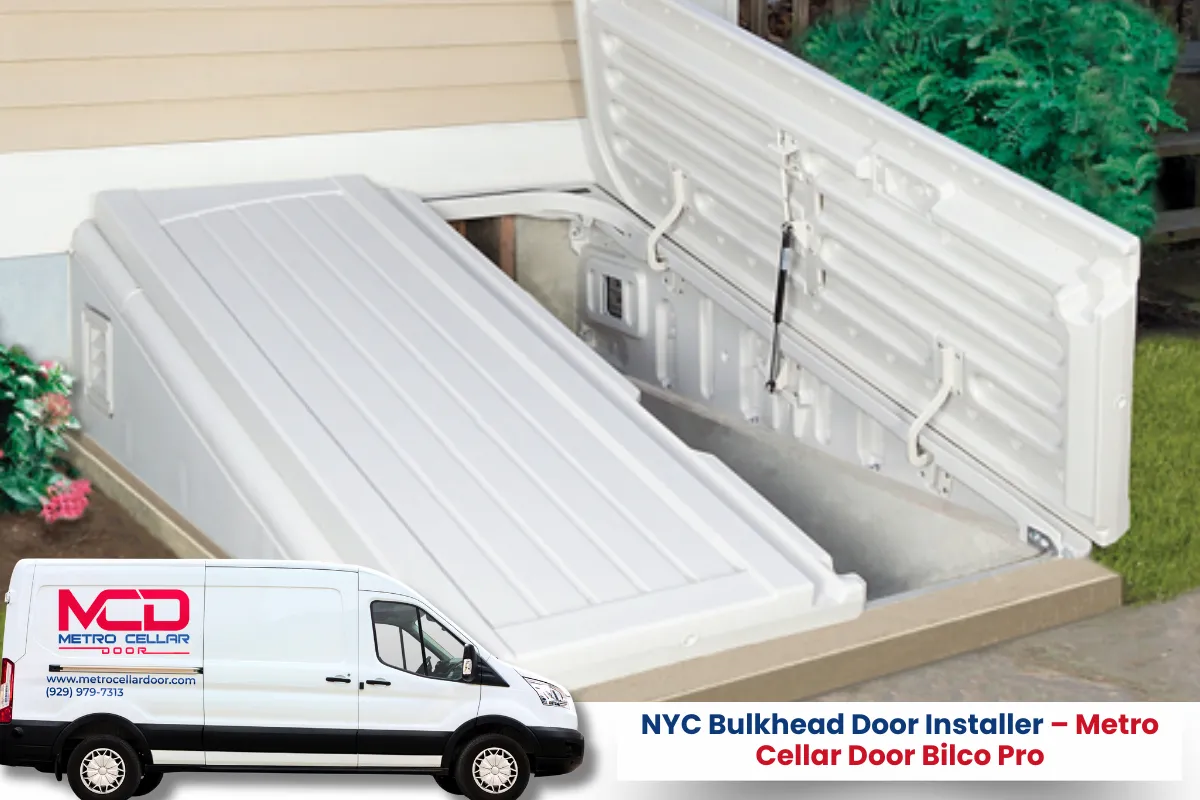
To ensure your installation is done correctly, contact Metro Cellar Door Bilco Pro! As a trusted bulkhead door installer, we offer top-quality services tailored specifically to New York City properties. Our team understands the complexities of working with older foundations, varying building codes, and unpredictable weather conditions.
We specialize in fire-rated door Installation, Cellar Door Installation, and both residential and commercial projects. Whether you need a Bilco Door Installer or a sidewalk cellar solution, we ensure that every door is installed with precision, care, and durability. Our services extend across Broad Channel, Queens, Brooklyn, Manhattan, Staten Island, The Bronx, Long Island, Westchester, and Northern New Jersey.
Call us today for a free estimate at (929) 979-7313!
Frequently Asked Questions About Bulkhead Doors in NYC
1. Are bulkhead doors required by NYC building codes for basements?
Bulkhead doors are not specifically required by name in the NYC Building Code. Still, they are a common way to comply with egress requirements, especially for basements used as living spaces. The code requires that all habitable basements have at least two means of egress—typically one interior stairway and one exterior exit. A properly installed bulkhead door that leads directly outside qualifies as an exterior exit if it meets dimensional and clearance requirements, including minimum height and width.
To be code-compliant, the door must be operable from the inside without the use of keys or tools and must lead to a public way or yard. These regulations are in place for safety, particularly in emergencies such as fires or gas leaks. Bulkhead doors make compliance easier for homeowners who wish to convert or legally rent out their basements in NYC. Always consult with a licensed architect or installer to ensure your door setup meets the latest DOB standards.
2. What type of bulkhead door material is best for NYC’s climate?
New York City’s climate features cold, snowy winters, hot and humid summers, and frequent coastal rainfall, making material selection a crucial factor in determining the longevity of bulkhead doors. The best materials for bulkhead doors in NYC are galvanized steel, aluminum, and polyethylene composites.
- Galvanized steel is strong and secure, making it an ideal choice for areas with high foot traffic or those requiring enhanced security. However, it must be maintained to prevent rust, especially in areas exposed to salt air, such as Broad Channel or the Rockaways.
- Aluminum is lighter than steel and naturally resistant to rust, making it an excellent choice for low-maintenance installations.
- Polyethylene composite doors are popular for their weather resistance and durability. These are rot-proof, pest-resistant, and don’t corrode over time.
All materials should include UV-resistant coatings or finishes to protect against fading. Choosing the right one depends on your location, use case, and maintenance preference. An experienced installer can help determine the best fit for your property.
3. How long does it take to install a bulkhead door in NYC?
Most bulkhead door installations in New York City can be completed within 1 to 3 business days, but the timeline depends on several factors. Standard replacements, where a door already exists, can be completed in as little as one day. However, new installations, especially those involving foundation cutting or concrete work, may take longer—typically up to three days or more.
Permitting is another time factor. NYC requires permits for any structural changes, so if the installation is not a simple replacement, the process may involve obtaining Department of Buildings (DOB) approval. That can add a few days to a few weeks, depending on the project scope.
Weather can also cause delays, particularly during colder months when concrete work becomes more difficult. Always plan and work with a licensed installer who understands NYC codes and timelines. They can handle both the permitting and construction aspects efficiently, thereby avoiding unexpected delays.
4. How do I maintain a bulkhead door in New York City weather?
To protect your bulkhead door from NYC’s extreme weather, follow a simple but consistent maintenance routine. First, inspect the door every spring and fall for signs of wear, including checking the hinges, locks, gaskets, and the surrounding concrete frame. Make sure no rust, warping, or cracking is present.
Next, clear debris, such as leaves and dirt, that accumulates around the door. Blocked drainage is a common reason for leaks and rust. Clean out gutters and downspouts connected to the area to prevent water buildup.
If your door is made of metal, repaint it every few years using a rust-inhibiting primer and a weatherproof exterior paint. Lubricate hinges and locks at least twice a year to prevent seizing during the winter months. For composite doors, check for UV damage or color fading.
Lastly, ensure the slope around your door directs water away from the basement entry. A few hours of upkeep each year can save thousands in repair costs.
5. Can I install a bulkhead door myself, or should I hire a professional?
While some home improvement stores sell DIY bulkhead door kits, installing one in New York City is not recommended as a do-it-yourself project—especially for structural or new installations. NYC has strict building codes and permitting requirements, particularly for structural changes, which include cutting into foundations or modifying basement walls.
Professional installers not only understand these regulations, but they also handle all permit applications, inspections, and compliance issues. They’ll ensure the bulkhead door is installed at the correct angle, properly sealed against water intrusion, and reinforced with concrete where necessary.
Inexperienced installations can lead to water leaks, uneven doors, failed inspections, or even basement flooding. Additionally, poor installations may decrease your home’s value or delay future renovations.
Hiring a licensed and insured bulkhead door installer guarantees peace of mind, code compliance, and a long-lasting result. It also saves time and money in the long run by avoiding costly mistakes.
Read more: Top Signs You Need a Bulkhead Door Replacement in New York City
